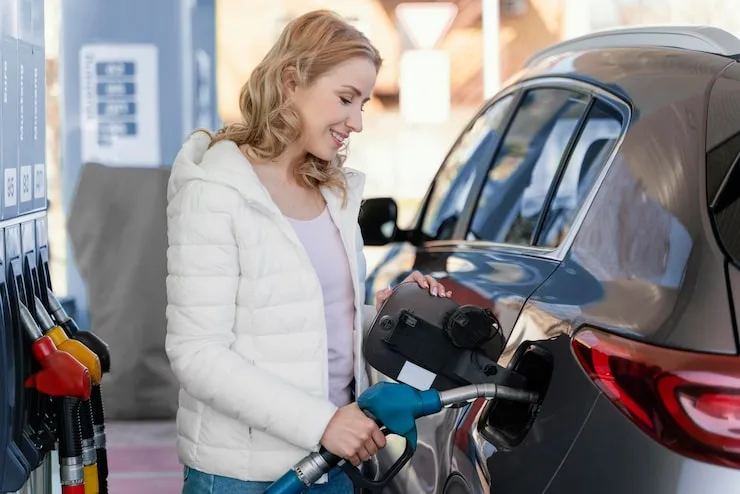What to Expect from New Cars in Terms of Fuel Efficiency
Fuel efficiency is becoming one of the most important considerations for car buyers in 2025, as rising fuel costs and environmental awareness continue to influence purchasing decisions. Automakers are constantly innovating to improve miles per gallon, reduce emissions, and provide drivers with vehicles that are both economical and environmentally friendly. For those exploring options, searching for a jeep for sale edmonton is often a starting point, allowing buyers to combine the rugged capabilities of a Jeep with the latest in fuel-saving technologies. Understanding what to expect from new cars in terms of fuel efficiency can help drivers make informed choices while maximizing both performance and sustainability.
Advancements in Engine Technology
Modern vehicles are benefiting from significant improvements in engine design. Automakers are using smaller, turbocharged engines that deliver the same power as older, larger engines but with improved fuel consumption. Variable valve timing, direct injection, and cylinder deactivation are common technologies designed to optimize energy use during both city and highway driving. These innovations allow drivers to enjoy performance without compromising efficiency, making even SUVs and trucks more economical than their predecessors.
Hybrid Powertrains for Everyday Driving
Hybrid systems are becoming increasingly mainstream across multiple vehicle segments. By combining traditional internal combustion engines with electric motors, hybrids offer significant fuel savings in city driving and stop-and-go traffic. Some plug-in hybrid models allow short-distance electric-only driving, reducing fuel consumption further while still providing the flexibility of a gasoline engine for longer trips. As hybrids become more affordable and widely available, they are expected to play a major role in reducing overall fuel use across the automotive industry.
Electric Vehicles and the Shift Away from Gas
Battery-electric vehicles (EVs) represent the ultimate in fuel efficiency, completely eliminating gasoline consumption. Advances in battery technology, energy recovery systems, and aerodynamics allow new EVs to travel further on a single charge while minimizing energy loss. Many automakers now offer models with ranges exceeding 400 kilometers, making EVs practical for both daily commuting and longer trips. The growing EV infrastructure also supports home and public charging, ensuring that drivers can confidently transition away from traditional fuel sources.
Lightweight Materials and Improved Aerodynamics
Fuel efficiency is not only about the engine; vehicle design plays a critical role. Automakers are increasingly using lightweight materials such as high-strength steel, aluminum, and composites to reduce overall vehicle weight without compromising safety. Additionally, aerodynamic improvements like sleek body shapes, underbody panels, and active grille shutters reduce drag, allowing cars to travel farther on less fuel. These design innovations are becoming standard in many new models, making them more efficient without requiring driver behavior changes.
Transmission Improvements
Modern transmissions contribute significantly to fuel efficiency. Continuously Variable Transmissions (CVTs), dual-clutch systems, and advanced automatic gearboxes optimize power delivery for maximum fuel savings. These transmissions adjust engine output more smoothly than traditional gear systems, reducing wasted energy and improving overall miles per gallon. Drivers often notice improved responsiveness along with lower fuel consumption, making daily commuting more cost-effective.
Start-Stop Systems for Urban Efficiency
Start-stop technology has become a common feature in new cars designed for urban driving. By automatically shutting off the engine when the vehicle is idle and restarting it when the driver accelerates, fuel is saved in heavy traffic conditions. This technology is particularly effective in cities where stop-and-go traffic is frequent, helping to reduce both fuel consumption and emissions.
Regenerative Braking and Energy Recovery
Some modern vehicles, especially hybrids and EVs, use regenerative braking systems that capture energy normally lost during braking and convert it back into usable power. This process not only improves fuel efficiency but also reduces wear on brake components. Drivers can experience extended driving ranges and reduced fuel consumption, particularly in stop-and-go driving conditions, without any extra effort.
Real-World Fuel Efficiency vs. Ratings
While official fuel economy ratings provide a useful benchmark, real-world fuel efficiency can vary based on driving style, terrain, load, and environmental conditions. New cars increasingly include features like eco-driving modes, fuel consumption displays, and predictive navigation to help drivers achieve better efficiency in practical scenarios. These tools allow drivers to adapt their habits and get closer to the vehicle’s optimal fuel performance.
Consumer Benefits of Improved Fuel Efficiency
Enhanced fuel efficiency has multiple advantages beyond cost savings. Drivers benefit from fewer trips to the gas station, lower emissions, and reduced environmental impact. Efficient vehicles can also contribute to a longer vehicle lifespan, as optimized engines experience less wear over time. For many buyers, knowing that a new car uses fuel responsibly adds peace of mind and aligns with sustainability goals.
Balancing Performance and Efficiency
One misconception about fuel-efficient vehicles is that they sacrifice power or performance. Modern automotive engineering has largely dispelled this notion. Turbocharging, hybrid assistance, and improved aerodynamics allow new vehicles to maintain or even enhance acceleration, handling, and towing capacity while reducing fuel use. Manufacturers are increasingly promoting models that deliver both performance and economy, appealing to a wide range of drivers.
The Role of Telematics and Smart Systems
Telematics and onboard smart systems are helping drivers monitor and improve fuel efficiency in real time. Features like predictive energy use, adaptive cruise control, and route optimization allow vehicles to minimize unnecessary fuel consumption. Some systems even analyze driving habits over time and suggest more efficient techniques, providing both financial and environmental benefits.
Future Trends in Fuel Efficiency
Looking ahead, fuel efficiency will continue to improve with ongoing innovation. Lighter materials, electrified drivetrains, AI-assisted energy management, and enhanced battery technology are expected to further reduce fuel consumption in the next generation of vehicles. Consumers can anticipate cars that are increasingly self-aware and capable of managing energy intelligently, providing a balance of convenience, power, and efficiency.
Conclusion
Fuel efficiency is no longer an optional feature — it has become a central aspect of vehicle design and consumer expectations. Advances in engine technology, hybrid systems, electric powertrains, lightweight materials, and smart systems are transforming new cars into highly efficient machines that are also practical, safe, and enjoyable to drive. By understanding what to expect from new cars in terms of fuel efficiency, buyers can make informed decisions that save money, reduce environmental impact, and enhance driving satisfaction.






